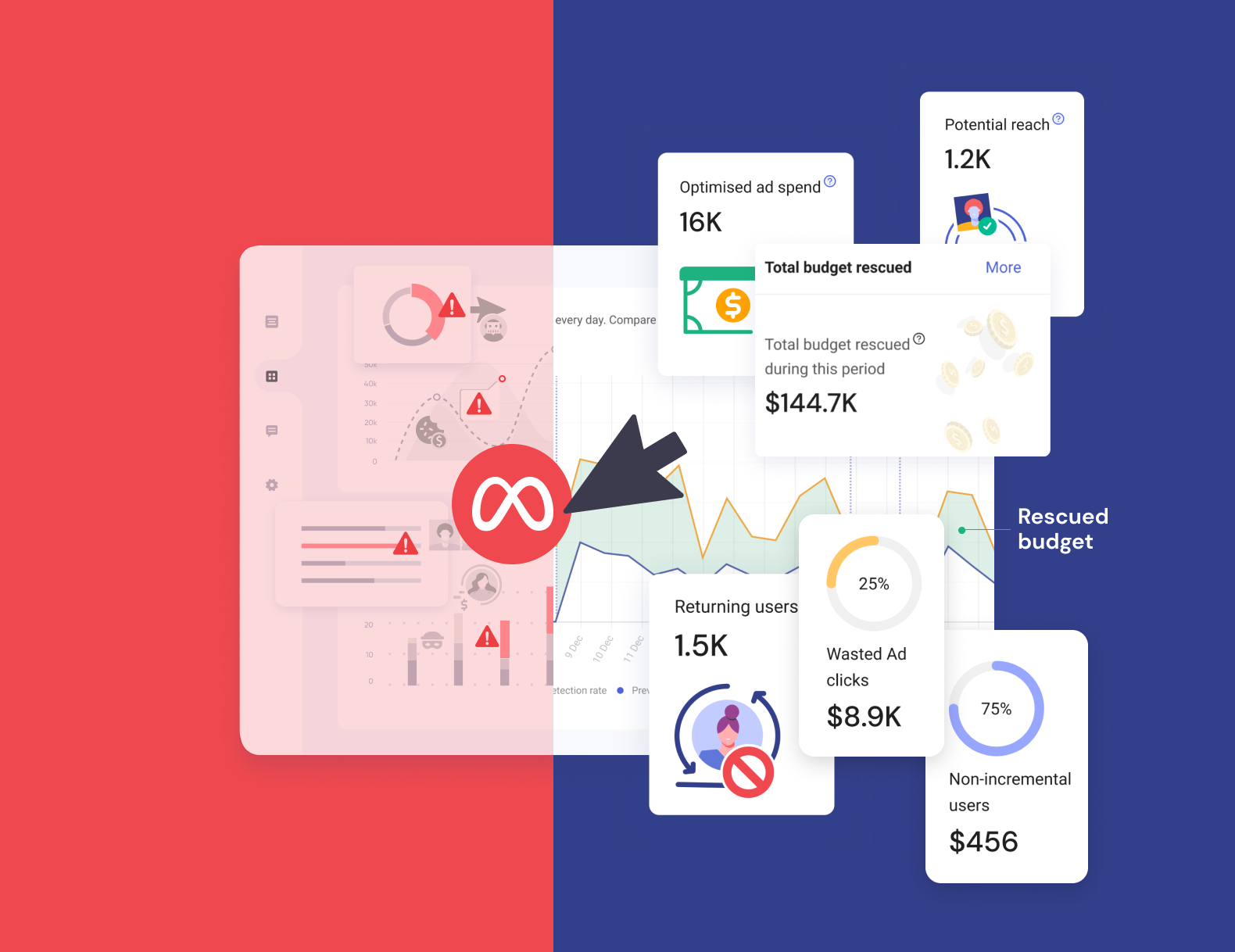Common Mistakes Marketers Make in PMax Campaigns

Performance Max (PMax) is Google’s most automated campaign type to date. It promises simplicity, reach and efficiency but it’s not without pitfalls. Many marketers jump in expecting better results with less effort, only to burn budget or struggle with inconsistent performance.
In this blog, we break down the most common mistakes digital marketers make in PMax campaigns and how to avoid them, especially when click fraud is quietly draining spend behind the scenes.
What Are PMax Campaigns?
Performance Max is a goal-based campaign type that allows advertisers to access all of Google Ads inventory from YouTube and Search to Gmail and Display through a single campaign. It uses machine learning to optimise across channels and formats, aiming to drive better performance based on conversion goals.
Rather than controlling individual placements or keywords, advertisers supply asset groups, audience signals, and conversion data. Google takes it from there.
Why PMax Is Popular Among Marketers
PMax campaigns offer:
- Full Google network coverage in one campaign
- Automated optimisation based on real-time conversion data
- Dynamic creative delivery across Search, Display, YouTube, Gmail and Discovery
- Simplified campaign management for lean teams or complex product catalogues
For performance-driven marketers, it’s an efficient way to scale. But it also means less transparency, less control and more reliance on clean data and traffic quality.
Top Mistakes That Hurt PMax Performance
1. Relying too much on automation
Automation is powerful, but not perfect. Many advertisers assume that handing everything to Google’s machine learning will guarantee success. In reality, poor inputs lead to poor outputs.
Without human oversight, PMax can optimise towards vanity conversions, waste budget on irrelevant placements, or favour broad but low-quality audiences. And building a click fraud response plan should be part of every marketer’s approach to handling automation risk and campaign anomalies.
2. Ignoring audience signals
PMax allows you to provide audience signals; data that helps Google identify high-value users faster. These aren’t hard targets, but they significantly influence early learning.
Failing to include well-researched audience signals means your campaign may start by testing against the wrong audience entirely. That delays performance and wastes spend.
3. Poor asset group structuring
Asset groups combine creatives, headlines, descriptions, and product feeds. Many marketers bundle everything into a single group, hoping the algorithm will sort it out.
This makes it harder to identify what’s working, limits message relevance, and undermines personalisation. Granularity here gives the algorithm more room to optimise, not less.
4. Not reviewing performance data frequently
While Google automates a lot, that doesn’t mean marketers should go hands-off. Skipping regular performance reviews means you miss important signals:
- Conversions from unusual regions
- Traffic spikes with no sales uplift
- Assets getting impressions but no engagement
You can’t optimise what you don’t monitor.
5. Failing to implement fraud protection
PMax campaigns are vulnerable to invalid traffic and click fraud. The wide reach and automation create blind spots where bots, click farms or even competitors can eat into your budget undetected.
The real risk isn’t only wasted spend, it’s polluted optimisation. When bots and fake clicks influence performance data, the algorithm starts learning from the wrong signals. That means your campaign could double down on low-quality traffic, missing genuine users entirely. Over time, this leads to rising CPAs, poor conversion rates, and stalled growth.
Relying solely on Google’s internal protections isn’t enough. To truly protect performance, you need dedicated click fraud prevention that blocks threats in real time, before they distort your data and derail your optimisation.
How to Optimise PMax Campaigns for Better Results
1. Use granular asset groups
Split asset groups by product category, funnel stage or audience type. This enables more relevant creative testing and clearer performance insights.
For example: if you’re running an eCommerce campaign, keep high-margin products or seasonal collections in separate groups. That way, you can adjust spend, messaging and visuals accordingly.
2. Regularly monitor and adjust signals
Review asset-level and audience-level performance weekly. If you’re seeing inflated traffic from low-converting placements or locations, adjust your audience signals and remove underperforming assets.
PMax doesn’t always reveal full placement data, but you can use tools like TrafficGuard for Performance Max to access these insights and take action.
3. Protect budget with TrafficGuard
To protect your Performance Max campaigns from click fraud and invalid traffic, TrafficGuard integrates seamlessly to provide real-time fraud detection and prevention. Our AI-powered software identifies and blocks invalid traffic, such as bots and ineligible users, across Search, YouTube, Display, and other PMax channels, ensuring your ad spend targets genuine users. By enhancing Google’s automation with precise negative exclusions and predictive analytics, TrafficGuard boosts campaign efficiency, improves ROAS, and delivers transparent insights into click sources and fraud patterns.
That means:
- Cleaner signals to train your automation
- Reduced wasted spend from bots and repeat abusers
- More accurate conversion data to optimise against
Invalid traffic isn’t just a reporting issue, it directly affects how PMax allocates budget. Click fraud protection is no longer optional if you want to scale effectively.
Looking to stop wasted budget in PMax? Talk to TrafficGuard and get back in control of your performance.
Conclusion
PMax offers big potential but only if you approach it with the right strategy. Automation still needs human input, clean traffic and regular review to work. Skipping those steps means leaving budget and performance on the table.
Marketers who get the best from PMax are the ones who combine Google’s automation with disciplined structure, smart audience signals and robust click fraud prevention.
FAQs & Key Takeaways
- Are PMax campaigns more vulnerable to click fraud than other campaign types?
Yes. The broad reach across Google’s network (Search, YouTube, Display, Gmail, and Discovery) and heavy reliance on automation create blind spots. Up to 20% of ad spend can be wasted on bots, click farms, or ineligible users, which distorts optimisation and reduces ROAS. Dedicated fraud protection, like TrafficGuard, is essential to block invalid traffic in real time.
- How can I identify which PMax placements are wasting my budget?
Google’s PMax reporting limits placement transparency, making it hard to pinpoint wasteful spend. Third-party tools like TrafficGuard provide detailed insights into click sources, traffic patterns, and fraud indicators, enabling you to identify and exclude low-value or fraudulent placements for better campaign efficiency.
- Why are audience signals critical in PMax if it’s fully automated?
Audience signals guide Google’s machine learning to target high-value users faster. Without well-defined signals, PMax may optimise for broad or irrelevant audiences, wasting budget. Poor signals also risk amplification of invalid traffic, like bots, which can skew performance. Regularly refine signals based on performance data to ensure efficient spend
Get started - it's free
You can set up a TrafficGuard account in minutes, so we’ll be protecting your campaigns before you can say ‘sky-high ROI’.
Subscribe
Subscribe now to get all the latest news and insights on digital advertising, machine learning and ad fraud.








